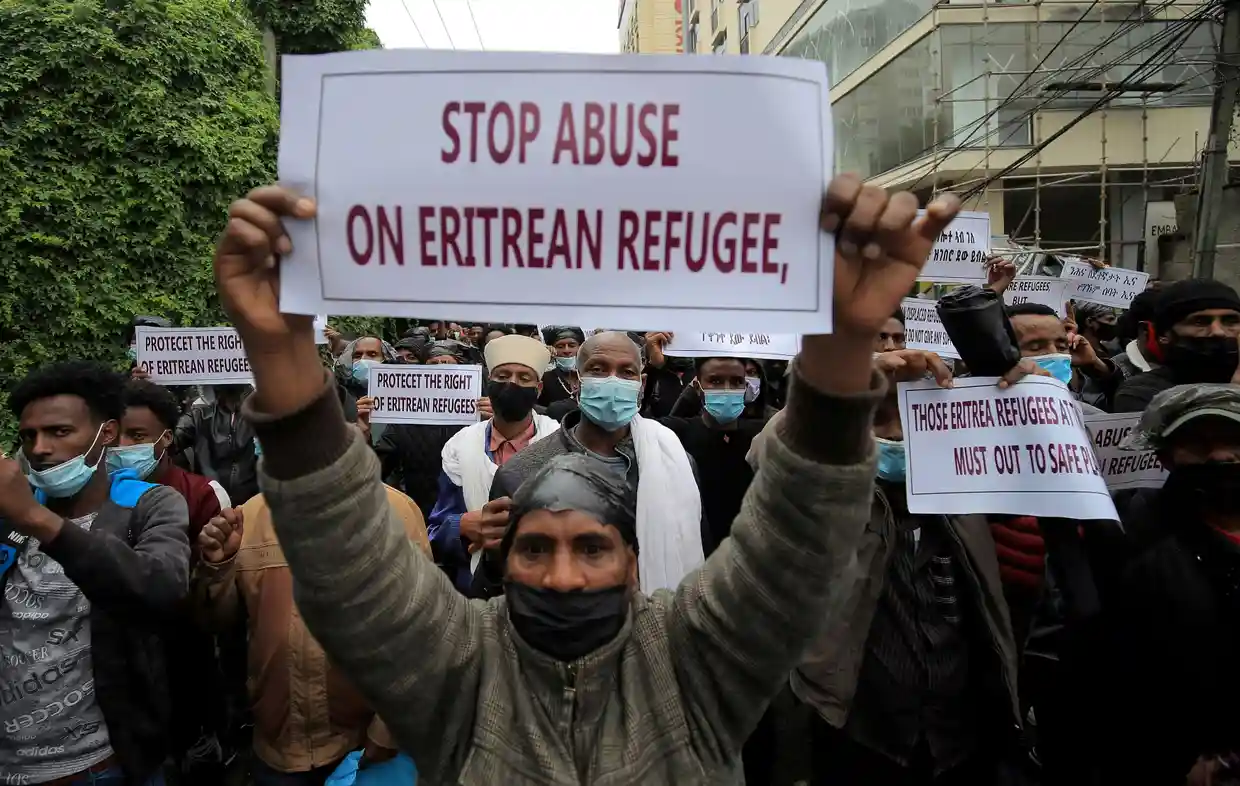
Ethiopian authorities must halt the mass deportation of Eritrean refugees, UN experts say. The country, which has hosted thousands of Eritreans for years, has also been accused of arbitrarily detaining large numbers of Eritreans, often on the ground that they lack documentation–despite the fact that the country’s Refugee and Returnee Service (RSS) stopped registering newly arrived asylum seekers in early 2020.
Mass Deportations
In recent months, numerous monitoring bodies have reported on the forced deportation of hundreds of Eritrean refugees and asylum seekers from Ethiopia. On 28 June, the Ethiopian Human Rights Commission (EHRC) stated that an estimated 200 had been deported from the country.
These reports were subsequently investigated and confirmed by a group of UN experts, amongst them the Special Rapporteur on Trafficking in Persons, the Special Rapporteur on the Human Rights of Migrants, and the Working Group on Arbitrary Detention. In a 13 July statement, they said: “Deporting migrants, refugees and asylum-seekers without conducting an individual and objective risk assessment of their exposure to human rights violations, including torture and enforced disappearance, upon return is refoulement.”
Ethiopian authorities say that asylum seekers and refugees have not been amongst those deported, but the UN experts challenge this claim: “According to several credible sources, the group included both registered and unregistered refugees and asylum-seekers.”
For years, rights experts have expressed grave concerns about the wellbeing of Eritreans forcibly returned to Eritrea, including many who have disappeared after being deported from Egypt, as the Global Detention Project (GDP) has reported previously. Amnesty International has also collected documentation of Eritrean deportees being interrogated, detained, tortured, and forcibly disappeared upon their return to their country.
Arbitrarily Detained
These deportations have taken place against a wider backdrop of arbitrary arrests, relocations, and detentions of Eritreans in Ethiopia–all of which have escalated since the outbreak of the war in Tigray in 2020.
In early June, the Ethiopian Human Rights Commission wrote that it was monitoring the treatment of hundreds of Eritreans detained in Addis Ababa. According to a representative who visited some of those detained in police facilities in Akaki Kalati (a southern district in Addis Ababa), many reported being detained on the grounds that they had been found working without a valid permit, or that they were in the city without permission to leave their refugee camp.
However, refugees and asylum seekers have been unable to register with Ethiopia’s RSS or request or renew documentation since early 2020, when the service was suspended. “In order to solve the problem,” concludes the Commission, “the registration services of refugees and asylum seekers and the renewal of identity documents should be started immediately.”
The GDP has not identified any dedicated immigration detention facilities in Ethiopia. But reports indicate that non-nationals are detained in police stations and prisons, as well as some refugee camps. In July 2022, the Guardian reported on the detention of hundreds of Eritreans in Alemwach Refugee Camp, near Derbak. Here, refugees alleged that there was a lack of food or water, shelters in poor condition, and minimal protection against local armed groups. The US State Department has also described “inhuman, prison-like” conditions for both Eritrean refugees and Tigrayan IDPs at the Turk Camp (also called the Turkish Camp) in Hayk, which features barbed-wire fencing and armed guards.
Attacked by All Sides
Since the outbreak of the Tigray conflict in 2020, Eritrean refugees and asylum seekers–many of whom live in refugee camps within the Tigray region–have faced abuse by all parties to the conflict. Camps in the region have been targeted and destroyed during the war, displacing tens of thousands of refugees. Many refugees have also been trapped in camps cut off from vital aid distributions. Some of those who have made it to safety in Addis Ababa, meanwhile, have been forcibly returned to camps in Tigray.
Both Eritrean and Tigrayan forces have targeted Eritreans–the former as vengeance for fleeing the country, the latter as vengeance for the atrocities Eritrean forces have committed against Tigrayans. Human Rights Watch has documented extensive evidence, for example, of both Eritrean and Tigrayan units killing, detaining, and disappearing Eritrean refugees in Hitats Camp.
National Context
Ethiopia has a long tradition of hosting refugees, and is currently home to the third largest number of refugees in Africa. According to UNHCR, as of 31 May 2023 there were 916,436 refugees and asylum seekers–principally from South Sudan, Somalia, and Eritrea–in the country. 87 percent of them live in camps (of which there are 21).
Although Ethiopia has acceded to the 1951 Refugee Convention and its 1967 Protocol, it has traditionally pursued a strict “encampment” policy and integration options have been extremely slim. In 2019, it adopted revisions to its refugee law allowing some refugees to live, work, and access services outside of camps. However, observers note that authorities have so far been slow in implementing this change.


